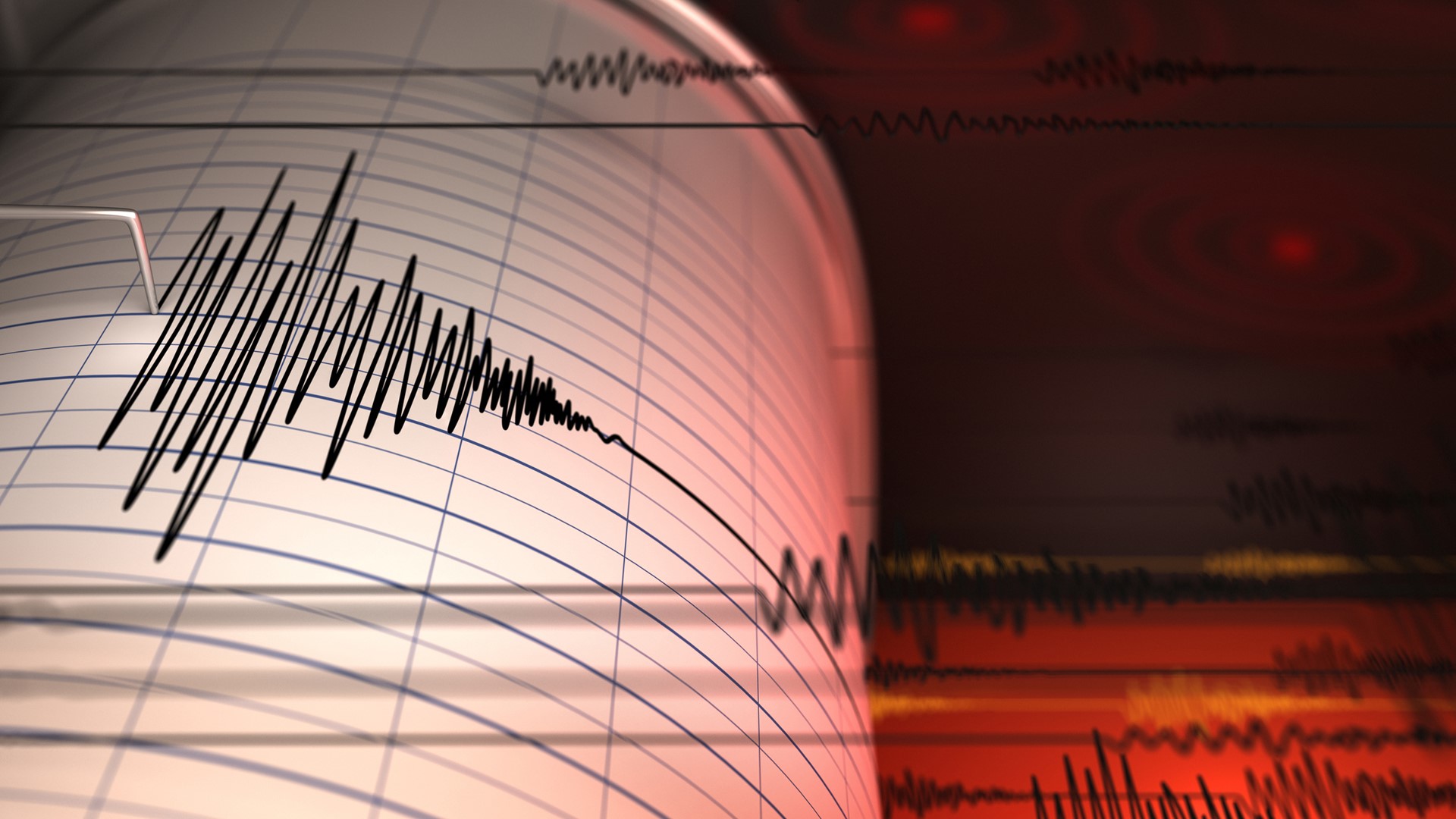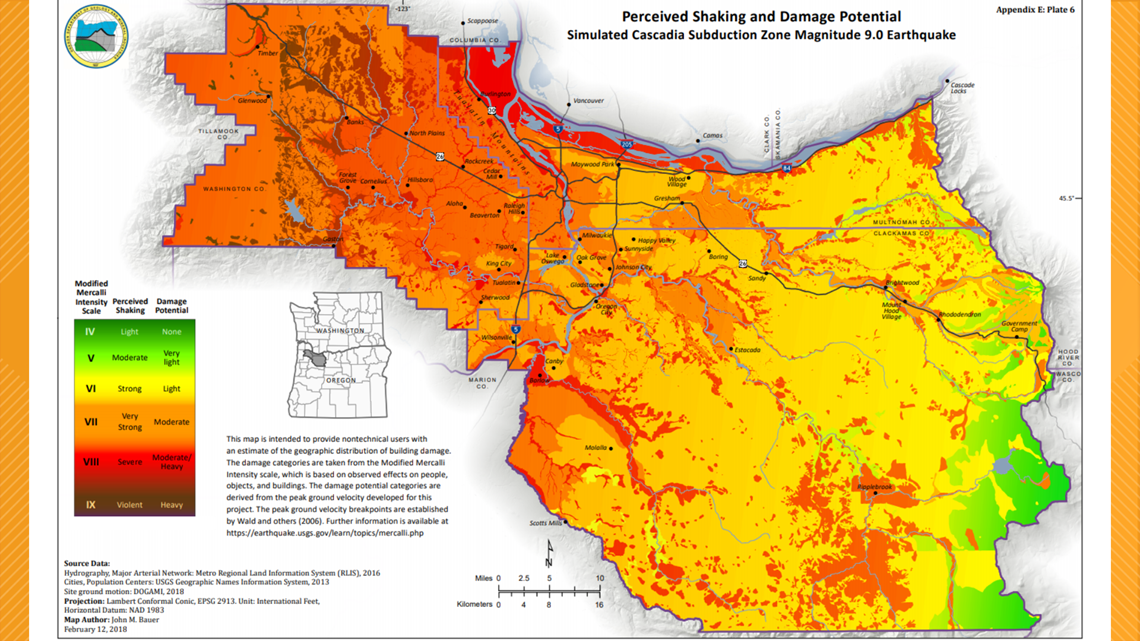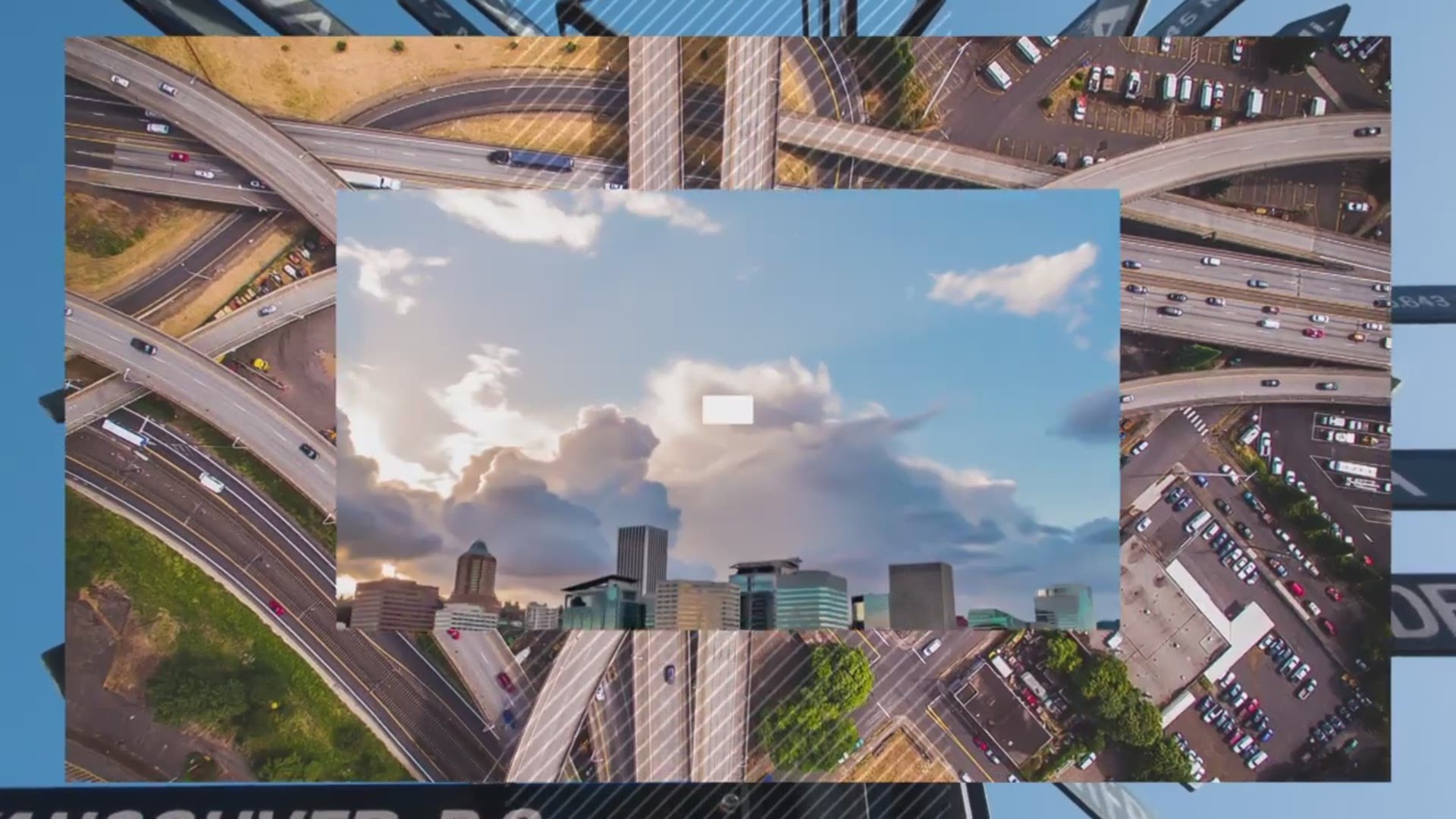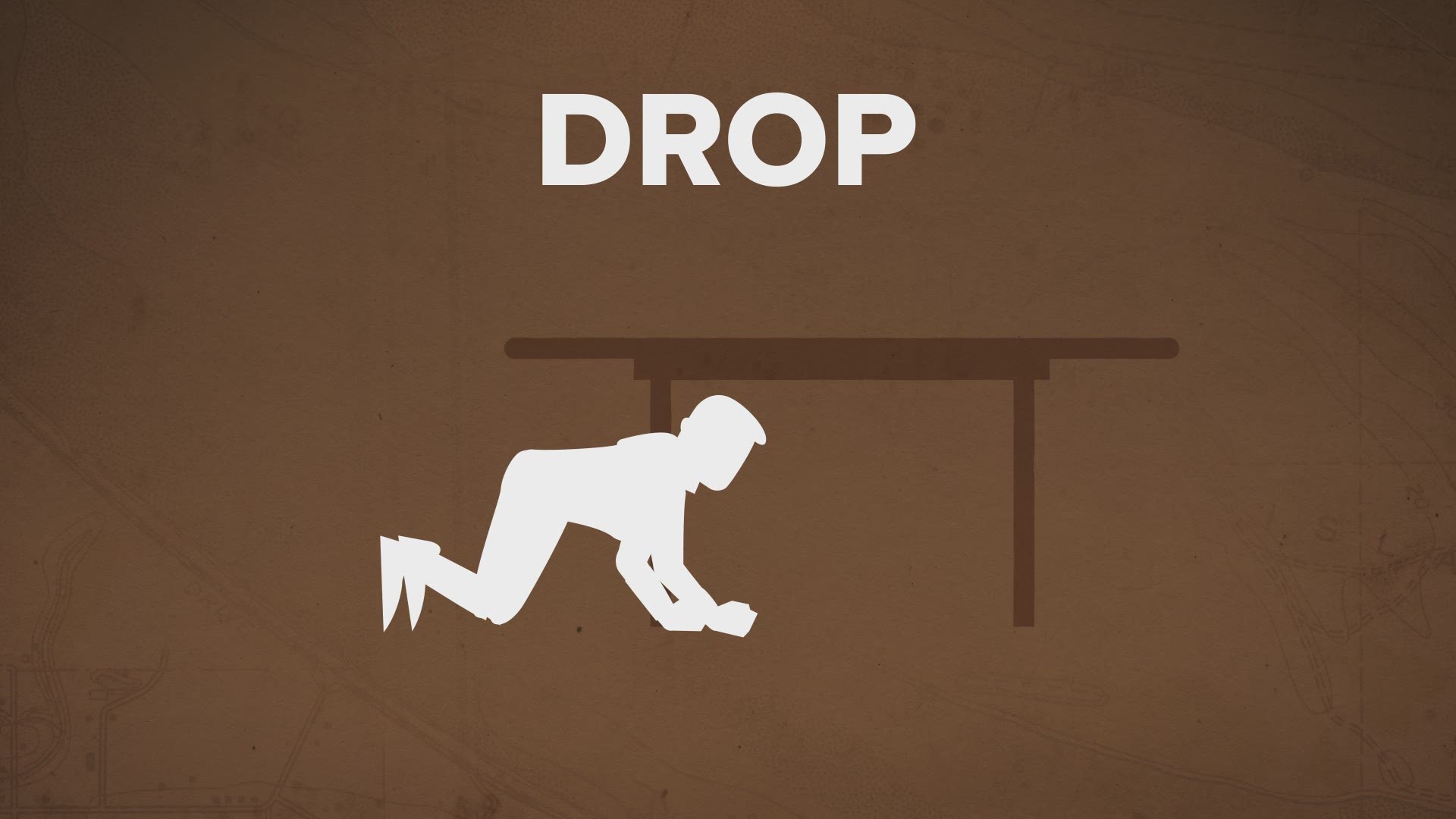Are you really ready for the big earthquake?
This KGW special report takes you through surviving the shaking, reuniting with your family, and stocking up for weeks without help.

Most experts agree, a major earthquake will hit the Pacific Northwest at some point.
In fact, according to Oregon State University Professor Dr. Chris Goldfinger, there is a 33% chance of a major Cascadia Subduction Zone quake happening in the next 50 years.
Every time a large earthquake hits elsewhere in the world, or a smaller one rattles off the Oregon coast, scientists tell us it’s a reminder that we’re in earthquake country and need to take steps to prepare. But are you really ready?
Quick links to get started now:
When the shaking starts How to survive the shaking
When the shaking starts, your first instinct may be to run. But instead, experts say your first thought should be to drop.
Before you do anything else, drop to your hands and knees to keep yourself from falling, then find cover. Your best bet is to crawl underneath a sturdy table or desk.
If you don’t have one, get next to an interior wall, away from windows, and cover your head and neck with your arms.
Then hold on to whatever your can, while keeping your head covered, until the shaking stops.
You may have heard to stand in a doorway, experts say in modern homes, door frames are no stronger than other parts of the home and they can leave you exposed to falling debris.
For most people, there’s a two-out-of-three chance you’ll be at home when the big earthquake strikes, according to Oregon State University.
Look around the places where you spend the most time in your house and ask yourself where you could take cover in case of an earthquake. Do the same thing at work, school, or other places where you spend a lot of time.
There’s also a one-in-three chance you’ll be in bed. In that case, stay there, lie face-down to protect your organs, cover your head and neck with a pillow and your hands.
What will the big one feel like?
If you haven’t been through an earthquake, it’s hard to imagine just what it will be like, but previous big earthquakes can give us some perspective.
When the magnitude 7.1 earthquake hit southern California in the summer of 2019, people described an intense shaking, and before many realized what was going on, it was over.
When the big one hits the Pacific Northwest, you can expect to feel it for much longer.
Doctor Chris Goldfinger with Oregon State University has studied earthquakes in our area for more than a decade. He says you can expect to feel a persistent shaking for three to five minutes.
“It would also feel much more like you're on a boat dock, just sort of a rolling motion, and less of the sharp rattles and shocks,” said Goldfinger.
Of course when your home starts shaking, you'll also be dodging falling items. It’s a good idea to secure your space now.
Pay close attention to the areas where your family spends the most time. Ask yourself what heavy items could fall and hurt you.
Consider moving bookcases and shelves away from places where you sit or sleep. Also move heavy items to lower shelves.
UCLA did a study on the 1994 Northridge Quake in California and found 55% of the injuries from it were from falling furniture or objects.
Learn more about securing your space here.
When the shaking stops What to do next
Once the shaking has stopped, check to see if you or anyone you're with is hurt.
If your home or building is unstable, you need to get outside and get away from it and any other structure that might collapse.
Try to put on sturdy shoes and watch for broken glass and falling debris as you evacuate.
You may get trapped in a collapsed building.
Focus first on keeping the dust out of your mouth, nose and eyes.
Then, instead of shouting for help, bang on a pipe or wall. You may not be able to call 911 if phone lines or down or jammed, instead, try a text message.
Monitoring for gas leaks
When the earth moves, so will your furnace, water heater and gas lines. Just one crack could send natural gas pouring into your home. Just one spark, and your house could go up in flames.
“If you look at damage resulting from earthquakes, gas fires are far and away the biggest cause of that,” said Michael Wieber with NW Seismic. The company specializes in retrofitting homes to help them withstand Earthquakes.
If you smell gas, hear the sound of gas escaping, or see other signs of a leak, turn off your gas. Make sure you know how to do that now, so you don’t have to try to figure it out in an emergency.
You should know where your gas meter is, where the gas shut-off valve is, and how to close it. You can use your basic crescent wrench and turn it a quarter turn.
You may also want to install an emergency shut-off valve.
The mechanism will automatically shut off gas coming into your home in a magnitude 5.2 or larger quake.
A steal ball inside the mechanism will drop when there’s a certain amount of shaking, and that plugs the flow of gas.
Learn more about earthquake shut-off valves here.
Tsunami Zones
If you live in a tsunami zone, you need to get inland, or to higher ground as soon as possible after a major earthquake.
If the big one hits, we could see damage much like they did in northeastern Japan in 2011. Waves 20 to 100 feet tall could crash into our coast.
For comparison, the Astoria column is 125 feet. If it were at sea level the wave would come close to the top.


You'll have only 15 to 20 minutes after the shaking to get to higher ground.
Signs up and down the Oregon coast point out the evacuation route.
Be sure to practice the route with your family. And be prepared to walk, not drive in case of damaged roads and traffic jams.
Stay on higher ground until officials say it's safe to leave. The danger from tsunamis can last for several hours, even days.
What kind of damage will there be? How you can deal with it
Will your home withstand the big one?
If you're wondering if your home would withstand an earthquake, you need to ask what it's made of, when it was built, and what retrofitting may have already been done.
The homes most likely to withstand an earthquake are wood framed and built after 1993. That's when Oregon adopted specific seismic standards for home construction.
If your home is older than that, it still may be safe if the home has been bolted to its foundation correctly. Also the "cripple walls," which are between the foundation and floor, need to be re-enforced.
The City of Portland has recommended steps to strengthen your home, which you can find right here.
Unreinforced masonry homes made of brick or concrete are the most at risk in an earthquake. And even if your home is not entirely brick, your chimney might be.
Retrofitters can add metal frames to give these structures a better chance at staying upright.
What will the city look like?
In an earthquake magnitude 8 or larger, most of the connections between the east and west sides of Portland will be severed.
A spokesman for Multnomah County, Mike Pullen, says none of the downtown Portland bridges would be usable after a big earthquake.
County officials are working on a plan to create an earthquake resistant crossing downtown, but for now, only the Tilikum Crossing and the new Sellwood Bridge are expected to withstand the quake.
Around the city you can expect some roads to be impassable, cracked open, or covered in debris.
Landslides are a big risk for the hilly areas of town, while a phenomenon called liquefaction will likely increase the damage in other areas.
Liquefaction happens when sandy soil, with shallow groundwater, shakes. It then starts to behave like a liquid.
Areas along the rivers are most at risk for liquefaction, but they are not the only areas.
These maps will show you how intense the shaking is expected to be in your neighborhood, and if there’s a risk for landslides or liquefaction.


Making a plan Talking with family and neighbors
Plan with your family
Your family may be spread out around town at the moment the earthquake hits. That's why it's so important to plan ahead of time how you'll communicate, and where you'll meet.
1. Designate a meeting place other than your home where you can stay if your home is damaged. Consider a secondary location in case some people can't get to the first meeting spot.
2. Make sure everyone in your family has a written list of emergency contact phone numbers they carry with them.
3. Designate a relative or friend outside the area whom everyone can check in with to find out what to do next. Cell phone towers and landlines may be damaged, so it may be easier to get a call or text to someone out of town. That person should be the one to tell everyone whether it's safe to go home, or if they need to gather at an alternative meeting place.
4. If you have children in school, know what their school emergency plan entails.
5.Sign up all phones for emergency alerts to get updates from authorities following the earthquake. Landlines are automatically signed up, but you need to sign up cell phone numbers. You can do that right here. This emergency alert system is specific to the Portland region.
Download family plan guidelines specific to parents, kids and pet owners here.
Plan with your neighbors
In addition to planning with your family, you’ll want to plan with your neighbors.
Did you know every neighborhood in Portland has a secret stash of emergency supplies?
The program is called BEECN, or "Basic Earthquake Emergency Communication Nodes".
The chests are locked in 49 locations around the city within blocks of each neighborhood meeting spot.
The meeting spots are in parks, green spaces, or school grounds. Find your neighborhood meeting spot here.
Each neighborhood has emergency team leaders that have the keys to the caches and are trained to help. They’re trained in basic search and rescue, along with radio communication.
Surviving the aftermath How to survive for weeks
In a worst case scenario, a magnitude 9 Cascadia Subduction Zone Quake, officials estimate 27,000 people will be hurt in Multnomah, Clackamas and Washington counties alone.
There are expected to be 1,500 fatalities.
And 85,000 people are expected to need shelter.
Oregon emergency planners say they will try to have emergency shelters operating and at least three emergency travel routes open within the first 24 hours after a major quake.
But the Red Cross says you should be prepared to go without outside help for as long as two weeks.
You may be without sewer, water, electricity and natural gas.
That's why we spend so much time talking about the importance of earthquake kits.
Getting together everything you need for your family can seem daunting, that's why experts recommend slowly building up your stash.
Here's a look at all the recommended supplies according to the Red Cross:
- Water: One gallon per person, per day, 2-week supply
- Non-perishable food, 2-week supply
- Flashlight
- Battery-powered or hand-crank radio
- Extra batteries
- First aid kit
- Medications, 1-week supply
- Multi-purpose tool
- Sanitation and personal hygiene items
- Copes of personal documents: medical information, proof of address, deed to home, passports, birth certificates, insurance policies
- Cell phone with portable charger
- Family and emergency contact information
- Extra cash
- Emergency blanket
- Maps of the area
That list includes just the basics. Check out an extended list here.
Ideally, create a kit for your home and a smaller one to keep in the car.
More warning before quakes Will there be more warning in the future?
One thing we don't have right now is a good way to warn people when an earthquake is coming, but that could change in just a few years.
The "Shake Alert" system includes thousands of sensors from Mexico up to Canada that could give us as much as a two-minute warning before a destructive earthquake.
Right now the system's being tested in Oregon with institutional users.
It's not available to the public.
We don't have enough sensors in place yet for it to be accurate.
Oregon shake alert managers say a federal grant should get all of the sensors up and running by 2022.



